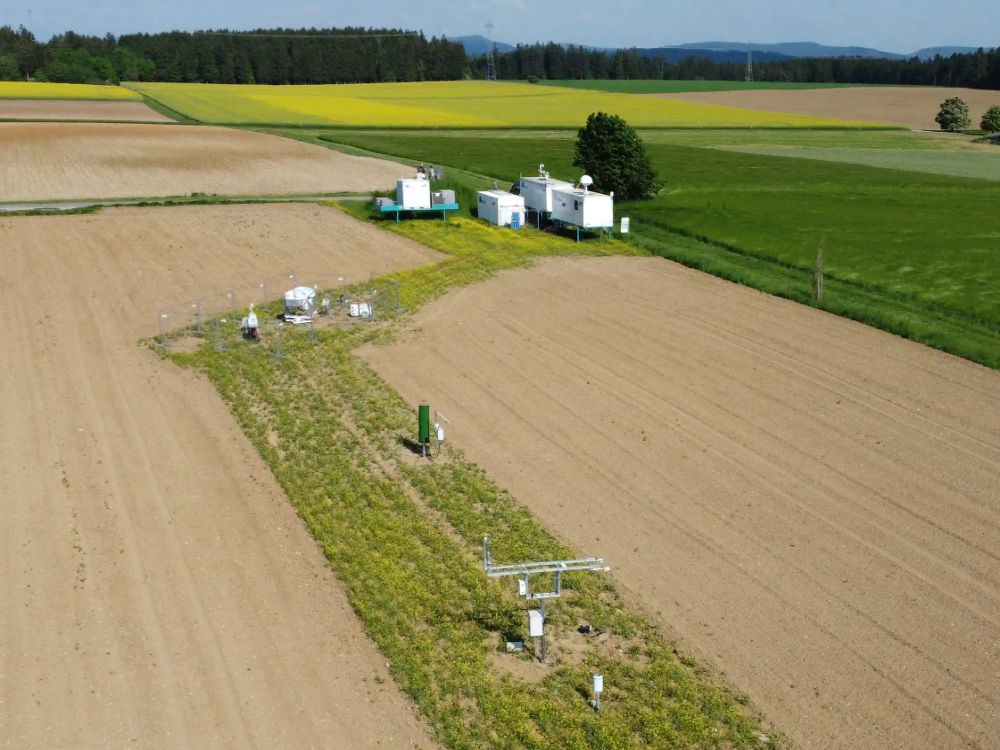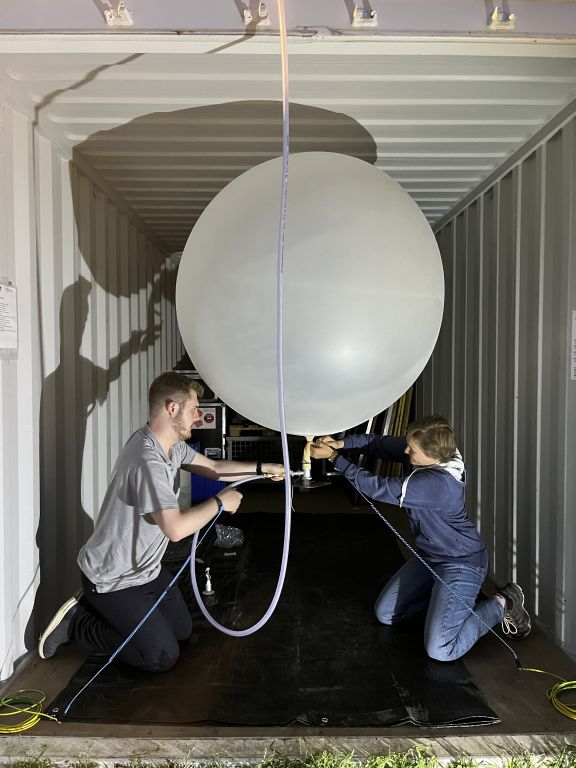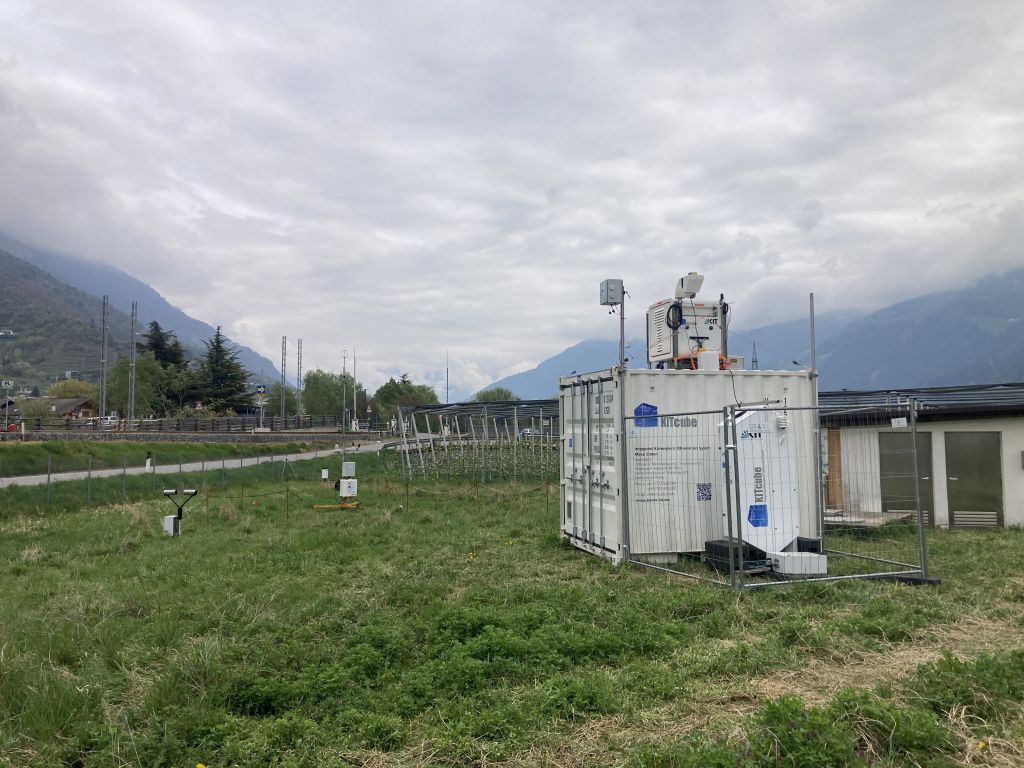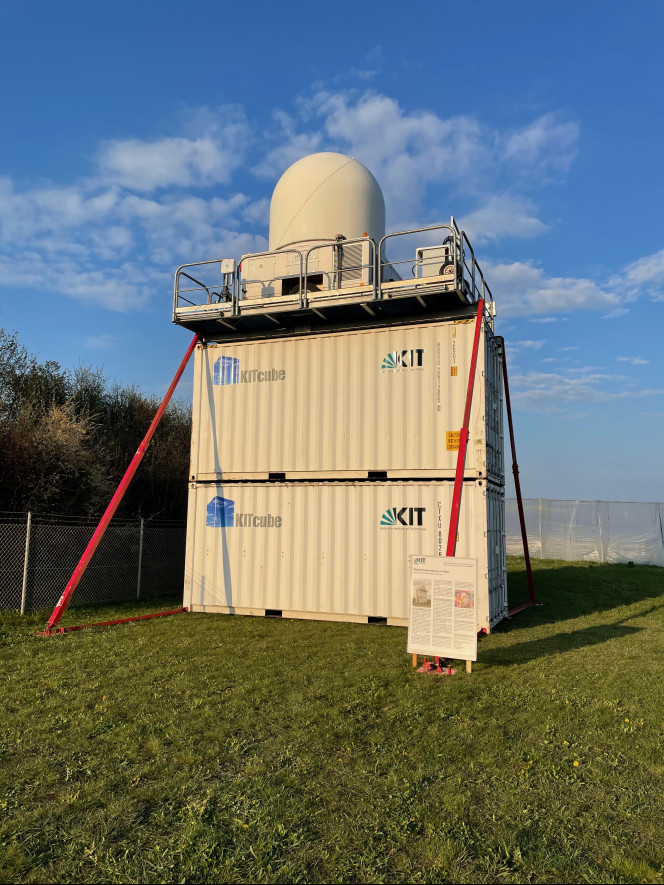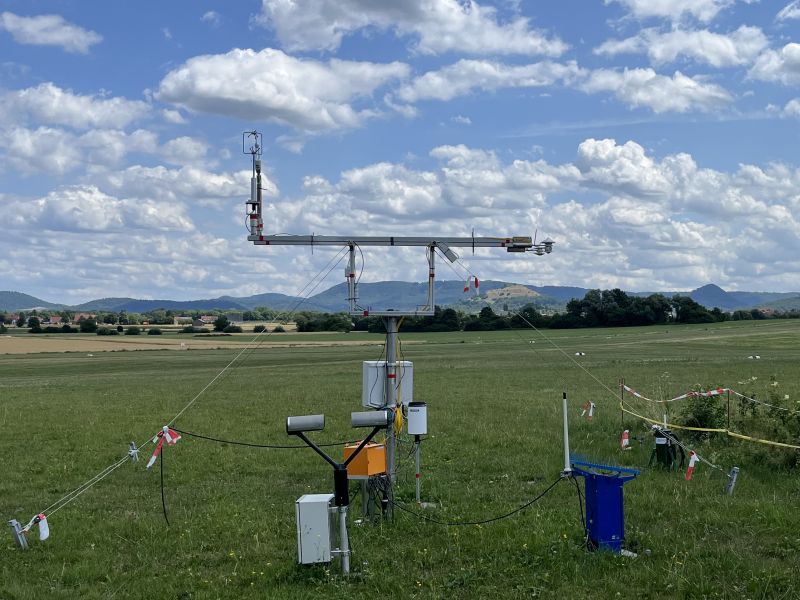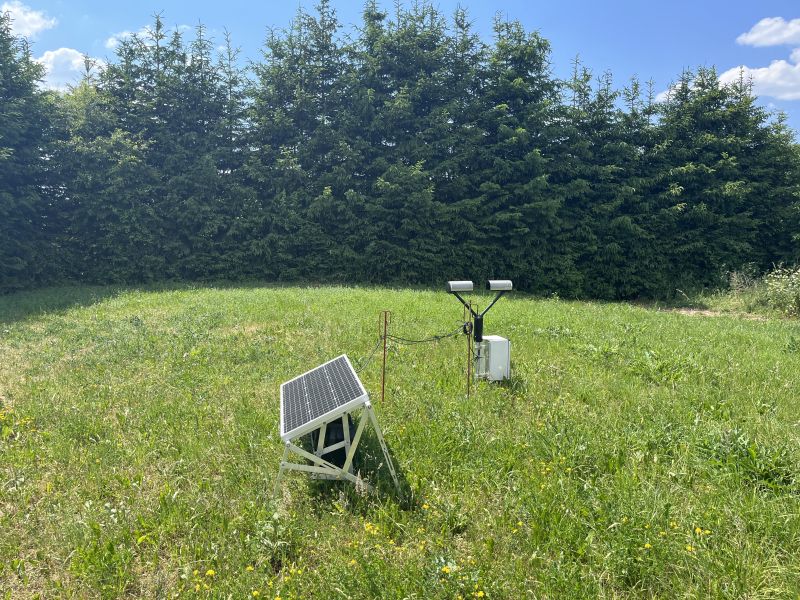System architecture
The mobile observation system of KITcube is designed modularly. The initiating idea of KITcube was to probe a cube of the atmosphere highly resolved. To conduct the required measurements, a main observation station is equipped with modern remote sensing systems and in situ instruments. Meso stations and sensor networks complement the main observation station and extend the observation area to cover the radius of about 100 km required according to the research focus. They allow to monitor the quantities varying in the investigation area.
The stations are highly mobile. This mobility enables the selection of observation sites primarily based on meteorological and logistical suitability. The meso stations and the sensor networks are operated fully automated and are monitored remotely through the KITcube IT infrastructure at KIT Campus North. Standardized data processing schemes and hardware structures enable the temporary integration of atmospheric observation systems of project partners. For example, measurements of aerosol components or water isotopes can be integrated into KITcube. Furthermore, automated processing of measurement data in time-critical applications is possible. This enables cross-system instrument control and feeding data into assimilation systems for weather prediction models.
Observation stations
Main observation station
The main observation station (Fig. 1) is the largest observation station of KITcube. It comprises continuous measurements of different meteorological quantities. In situ measurement systems are an energy balance station and a disdrometer. Passive remote sensing systems of the main observation station are a microwave radiometer for temperature and water vapour profiles, a cloud camera, a GNSS water vapour sensor, and a photometer. A Doppler Lidar for wind measurements, a cloud radar, and a ceilometer serve as active remote sensing instruments. During intensive observation periods, radiosoudings are additionally carried out.
Office and workshop infrastructure, with the ability to monitor measurements on site and for the preparation of radio soundings (Fig. 2), are also part of the main observation station. The workshop offers repair facilities for broken devices.
Meso station
A meso station (Abb. 3) consists of a Doppler Lidar for wind profiles, a DIAL for water vapour profiles, a cloud camera, a mobile meteorological station for measurements of temperature, pressure, wind, humidity, and precipitation near to the surface, and a disdrometer.
Other stations
Other stations are arranged on demand according to local conditions and the research questions under consideration. Examples are radar stations (Fig. 4), Energy balance stations (Fig. 5), additional radiosonde stations, or stations of the disdrometer network (Fig. 6).

